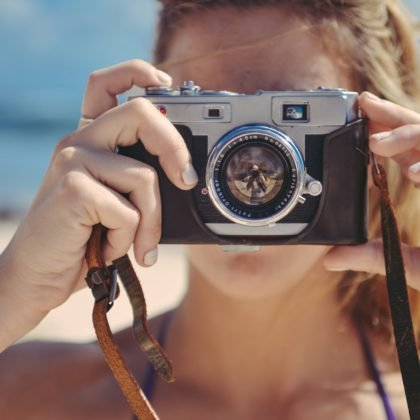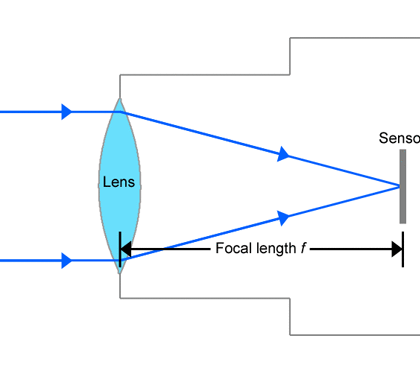
Welcome to the Ultimate Beginners Guide to Understanding Different Types of Camera Lenses and their Potential Uses
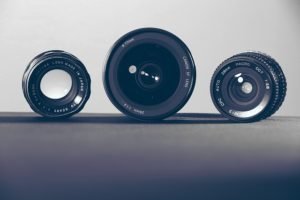 If you are starting to get involved in photography or simply decided it’s finally time to graduate from your camera phone or point and shoot camera to a DSLR then your head is probably swimming with a lot of questions, especially around all the different types of camera lenses these potential fancy cameras come with. If you are like us then you are probably feeling a bit overwhelmed trying to understand exactly what each lens does and which one to use in for different types of photography.
If you are starting to get involved in photography or simply decided it’s finally time to graduate from your camera phone or point and shoot camera to a DSLR then your head is probably swimming with a lot of questions, especially around all the different types of camera lenses these potential fancy cameras come with. If you are like us then you are probably feeling a bit overwhelmed trying to understand exactly what each lens does and which one to use in for different types of photography.
DON’T WORRY AFTER YOU READ THIS, CAMERA LENS OPTIONS WILL TOTALLY MAKE SENSE.
Understanding the Two Categories of Camera Lenses
There are two categories of lenses, prime lenses and zoom lenses.
- A zoom lens has a range of focal length and you can zoom in and out. Very convenient.
- A prime lens only has one focal length. It’s fixed, does not zoom in and out, not as convenient.
As I mentioned before, prime lenses are fixed. They only have one focal length. They do not zoom, but there are advantages to using a prime lens:
- 1. prime lenses tend to be smaller in size and lighter, which makes them more portable. Their construction is not as complicated as a zoom lens. They have far less glass, and they are also faster, which means they can open up to wider apertures taking in more light. It makes it a little bit easier shooting in places with low light.
- 2. prime lenses tend to produce sharper images than zoom lenses. This is one of the reasons why filmmakers prefer to work with primes.
- 3. because primes open up to larger apertures you can get a really shallow depth of field. Four, they’re generally cheaper.
- 4. A really nice, expensive prime is not going to be as expensive as a really nice zoom. Again, the zooms have all that added complexity, all those moving parts, and optics.
Prime lenses are definitely not as convenient as zoom lenses, so if you want to get closer to your actor or your subject you’ve literally got to get up and move closer to your subject.
Understanding the information written on your lens.
THE LENS MANUFACTURER
One of the first things that you’ll see on the lens on the front or somewhere on it is the manufacturer’s name.
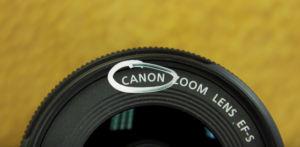
FOCAL LENGTH
Each lens has what’s called a focal length. The focal length is usually marked on the lens. You’ll see a number with two Ms behind it for millimeters (MM). This one has a 20 Millimeter Focal Length.
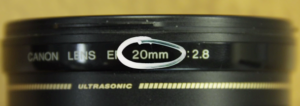
If it’s a zoom lens, there will be a number range indicating the zoom range. This one goes from 10 to 18 millimeters.

Understanding Lens Focal Length Further
Technically focal length is the distance between where the lens focuses incoming light in the camera’s digital sensor.
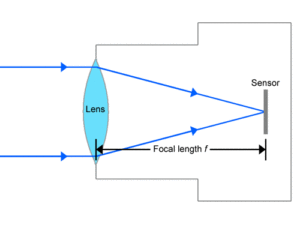
It’s a lot easier to think of focal length as a magnification of the image. A higher focal length means higher magnification, and a lower focal length means lower magnification.
EXAMPLE OF HOW CHANGING FOCAL LENGTH AFFECTS THE PHOTO IMAGE
If we took a camera, stuck it on a tripod, and photographed a subject changing only the focal length, not moving the camera, it would look something like this. Again, the tripod is not moving. We’re just changing the lens and the focal length.
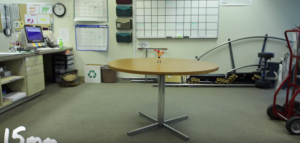
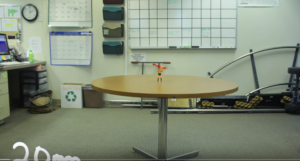
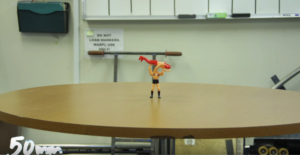
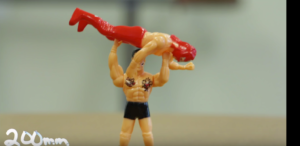
Longer focal length lenses are also great for isolating a subject in a frame as well because you see a lot less of the background due to the narrow field of view, and they have a smaller depth of field, which is how you end up with that creamy out of focus background. Our eyes are naturally going to be drawn to the only thing in focus, which is the actor or the subject.
WHAT DOES APERTURE MEAN AND DO?
What you need to know about Aperture. There’s an opening in the back of the lens that opens and closes. This is called the aperture. The next few numbers on the lens refer to the aperture. The aperture is a ratio of one and another number. The other number is the maximum aperture or the widest the aperture can open up.
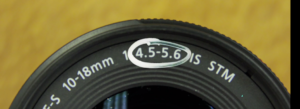 The lower this number, the more light the lens can take in. It might get confusing when you see two numbers here, which is the maximum aperture, 4.5 or 5.6. Well, it’s both. This means that the lens has a variable aperture, so when you zoom all of the optics inside are shifting. Because of this shifting, the lens takes in less light toward the end of the zoom range, resulting in the aperture changing and your images getting a bit darker.
The lower this number, the more light the lens can take in. It might get confusing when you see two numbers here, which is the maximum aperture, 4.5 or 5.6. Well, it’s both. This means that the lens has a variable aperture, so when you zoom all of the optics inside are shifting. Because of this shifting, the lens takes in less light toward the end of the zoom range, resulting in the aperture changing and your images getting a bit darker.
You can see it in camera as well. Notice how when you zoom in the image darkens slightly. Again, that’s because the aperture’s changing.

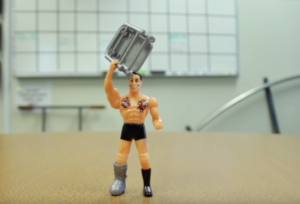
You mostly see this with cheaper variable aperture zoom lenses. Not necessarily a bad thing. It’s just it is what it is. It’s something to be aware of.
If you want to learn more about Aperture definition and what it’s so critical in your photography read out complete Aperture guide here
All about Fixed Aperture Lenses
What is Fixed Aperture? They are complex mechanisms inside that allows the camera lens to maintain the max aperture regardless of the zoom range.
Your more expensive zoom lenses have what’s called a fixed aperture. They are complex mechanisms inside that allow you to maintain the max aperture throughout the entire zoom range. Like the Canon 70 to 200 millimeter [L series lens.) At 70 millimeters, the max aperture is 2.8, and at the end of the zoom range, 200 millimeters, the max aperture is still 2.8.
The pricier lenses tend to perform a lot better in low-light shooting conditions because their apertures can open up wider too, like, 2.8, 1.4. they’re considered fast lenses. A kit lens would not be great for shooting in low light conditions because the widest this aperture can open up to is 3.5. this would be considered a slower lens, or a slow lens.
Here’s a shot with a lens that could only open up to 5.6 and here is another shot with a lens that could open all the way up to 1.8. See the difference? We get so much more light.
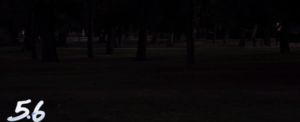
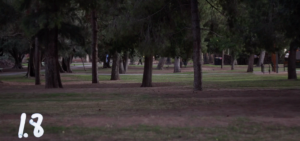
What does Field of View mean when it comes to lenses?
The field of view or the angle of view is a fancy way of saying how much stuff you can see in the frame. If I take a shot of this toy on a 10-millimeter lens we have a very large field of view, which means we can see a lot more of the environment around the toy.
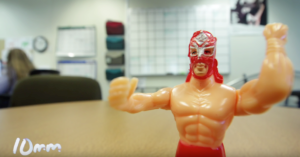
If you take another shot of that same toy at 200 millimeters you’ll notice that the field of view is very different. It’s so narrow that we don’t see much of the environment at all.
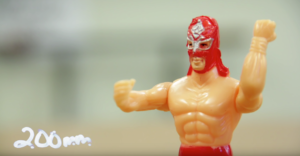
- Lenses that provide a field of view that’s about what the human eye can see are considered standard or normal lenses. These range from about 35 millimeters to 70 millimeters.
- Lenses that provide a wider field of view than what the human eye can see are considered wide angle lenses. These are pretty much anything that’s less than 35 millimeters.
- Lenses that provide a narrower field of view than what the human eye can see are considered telephoto lenses. These are pretty much anything above 70 millimeters.
What is Lens Perspective?
Different focal lengths will alter the perspective as well.
- Wide angle lenses exaggerate the size of anything closer to the camera, making it appear larger. They also expand or exaggerate distance, making anything that’s farther away from camera appear even further away.
- Let’s see what happens if I place these two toy figures five inches apart from each other and take pictures of them with different focal lengths. If we look at the first photo on a wide angle lens, the toy on the right looks a lot smaller than the toy on the left. It also looks further than five inches away.
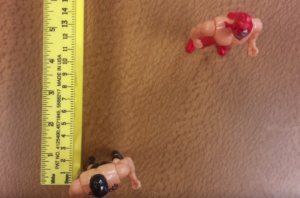
10mm Wide angle lens example of figures 5 inches apart 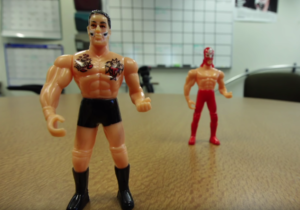
- Wide angle lenses exaggerate distance. Wide angle lenses are great for making smaller objects appear much bigger to draw more attention to them.
- Wide angles also allow us to feel much closer to the actors or subjects because we can see more of their environment with the wider field of view and we’re literally closer to them in terms of perspective. The lower the focal length, the more of the environment you pull into the frame.
- Wide angle lenses are 24 to 35 millimeters.
- Ultra wide angle lenses are 16 to 23 millimeters,
- Fisheye lenses are pretty much anything less than 16 millimeters.
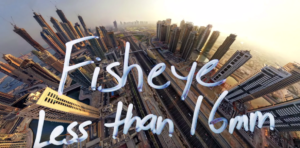
Really wide angle lenses bend light more strongly than regular lenses, which gives you a really deep depth of field. Everything is in focus.
Understanding Lens Distortion
What is Lens distortion? Wide angle lenses tend to produce lens distortion because they bend light very differently than normal or telephoto lenses. You can get barrel distortion. Another name for it is bowing or arcing, where straight lines appear to curve slightly, or extremely, depending on how wide the lens is. Also, things closer to camera at the edges of the field of view can get warped or distorted.
- Here’s a ball shot at 100 millimeters.
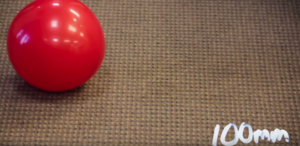 Notice there is no distortion because it’s pretty much telephoto.
Notice there is no distortion because it’s pretty much telephoto. - At 50 millimeters, it’s still pretty clean. No visible distortion.
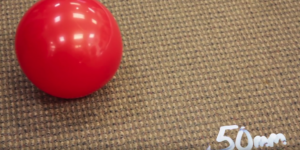
- At 24 millimeters we’re considered wide angle. Definitely starting to see some distortion and warping around the edges.
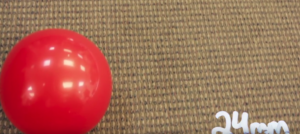
- At 15 millimeters we’re in the ultra wide territory. The ball loses its shape around the edges of the frame.
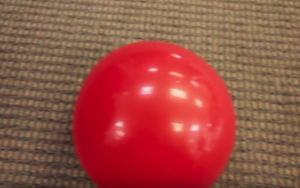
- At 10 millimeters the ball takes on more of a pill shape around the edges.
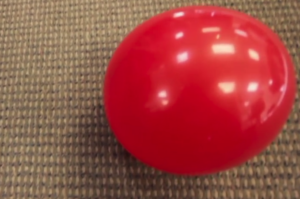
Compared to an earlier shot at 100 millimeters the distortion is pretty severe.
What is Lens Compression?
What is Lens compression? Longer focal lenses, lenses 70 millimeters and above, compress distance, so background objects and foreground objects look way closer than they actually are. Remember that pic that I took earlier at 10 millimeters? Let’s take another pic of the same toys going telephoto on a longer focal length. Remember the position of this tripod and how it looks in the background here for the next shot.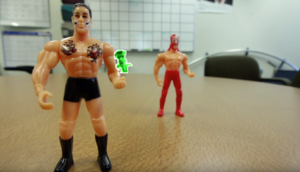
Here’s a pic of the toys at 200 millimeters. 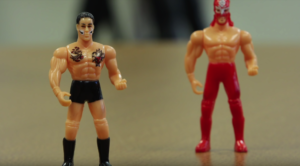
The toy on the right looks much closer to the toy on the left now. A lot closer than five inches. The toy on the right even appears to be the same size as the toy on the left. If we look closely, even the tripod in the back is way bigger and appears much, much closer to both the toys in the foreground.
Essentially the background and the foreground are compressed. Everything has been flattened. Because of the flattening effect that longer lenses have, it tends to be more flattering to facial features. When you’re shooting supermodels or very stylistic, glossy commercials everything tends to look better on a longer lens.
CHOOSING FOCAL LENGTH ON ZOOM LENSES
If you’re using a zoom lens you’ll see the focal length indicator marked on the side of the lens or it could be on the top of the lens. This one goes from 10 to 18 millimeters. 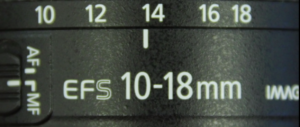
You can zoom between the various focal lengths by turning the zoom ring. You might also notice that the lens gets longer. You usually see this with lower end zoom lenses. The pricier zoom lenses have what’s called an internal zoom, where the lens doesn’t visibly move in and out.
You’ve got your focus ring.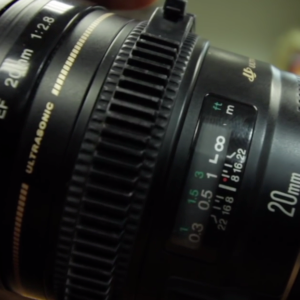 Here we can focus on anything from .25 meters to 1 meter away, or .82 to three feet away.
Here we can focus on anything from .25 meters to 1 meter away, or .82 to three feet away.
You’ll also see a figure eight looking symbol lying on its side. This marking means infinity. What does that mean? Well, the simple version. If you’re trying to focus on something that’s too far away to focus on, like the mountains, if you move this to the infinity mark they’ll be in focus. You’ll also see a switch that says AF and MF, for autofocus and manual focus.
What does this Stabilized Switch Do?
You might also see a switch that says stabilizer. It is a built-in feature in the lense to take away shaking or movement in the shot. There are better ways to stabilize the image than the built-in stabilizer on the lens when shooting video because you might get some funky things when you’re using it while you’re shooting video, but some filmmakers use it.
Overall there are much better ways to stabilize the image, like using tripods, dollies, shoulder rigs, and steady cams.
Lens Filters
The next number you’ll see on the lens is the diameter. You’ll see a circle with a slash through it and a number next to it. If you want to use any filters or lens caps you will need this number to get the correct size.
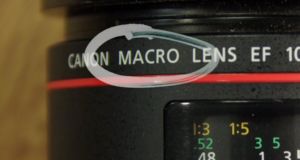 Macro. If you have a lens that is capable of macro photography it’ll say the word macro on the lens somewhere. You’ll be able to focus on subjects or objects from a really short distance away and achieve close-ups with more detail than the human eye can see. You can think of macro photography as the cinematic equivalent of a magnifying glass.
Macro. If you have a lens that is capable of macro photography it’ll say the word macro on the lens somewhere. You’ll be able to focus on subjects or objects from a really short distance away and achieve close-ups with more detail than the human eye can see. You can think of macro photography as the cinematic equivalent of a magnifying glass.
There are different variations on a macro lens. With macro photography the longer the focal length, the greater the magnification. If you’ve got a 60-millimeter macro capable lens then you might be able to use that for product photography, but if you’re trying to catch all the details on, like, a fly’s face then you’re probably going to want to go to 100 millimeters or more.
One thing to remember about shooting macro is you’ll end up with a really shallow depth of field, so if you want whatever you’re shooting to be completely in focus and not just a small piece of it then you’re going to have to pour more light on it and close that aperture down so that you can get more in focus.
How to make sure you are mounting the lens on the Camera Correctly?
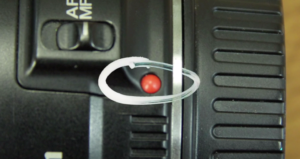 On the back of your lens, you’ll see a colored dot. This is the mounting marker. It lines up with the identical dot on your camera so you can mount the lens on to the camera correctly. You should never have to force a lens onto a camera. If it’s not lining up then you’re probably doing something wrong.
On the back of your lens, you’ll see a colored dot. This is the mounting marker. It lines up with the identical dot on your camera so you can mount the lens on to the camera correctly. You should never have to force a lens onto a camera. If it’s not lining up then you’re probably doing something wrong.
More about Lens Mounts
All about Lens mounts. Digital cameras that can use interchangeable lenses have different mounting systems or connection points. These different mounting systems ensure that the lens connects to the camera the way it was designed to so that light passing through the lens will fall onto the sensor correctly.
Most lenses and cameras have contacts, which allow the lens and the camera to communicate information like autofocus, aperture, various settings back and forth. When you change the settings in the camera this connection allows the lens to know what settings to use.
Some of the most common mounting systems are the [PL 00:11:40] mount, the Canon [EF 00:11:41] mount, the Nikon [F 00:11:42] mount, the Sony [E 00:11:45] mount. There are plenty of others.
Sometimes this can get a little tricky because manufacturers make various types of mounts, so you can get a lens that, say, is like a Canon [EFS 00:11:54] mount and it won’t fit on a Canon camera that just has an [EF 00:11:57] mount.
The moral of the story, if you’re buying or borrowing a lens make sure you get the lens with the correct mount. If you do run into a situation where you have a lens and a camera and they’re two different mounting systems there are adapters that you can get on Amazon.
Which are better Prime or Zoom lenses by different Video shooting scenarios?
If you’re doing lots of videography or documentary-style shooting where you don’t have much control over your environment then you’re probably going to want to work with some zooms.
If you’re recording live events you do not have time to be constantly swapping lenses, or else you’re probably going to miss … The range of focal lengths allows you to zoom right in on the action. Also, if you’re going to be in really dusty, sandy, dirty places you don’t want to be swapping lenses in these environments, as you’re going to get dust and stuff all over your sensor.
If you’re literally just starting out and you got no money, just use the kit lens. Use what you got.
Cinema lenses. Cinema lenses are designed specifically for filmmaking, whereas photography lenses are designed for photography, but you can do both with them.
There are a few differences between cinema lenses and photography lenses. The focus throw on a cinema lens is a lot longer than a photography lens. With a bigger focus ring and longer throw, it’s much smoother and easier to rack focus, especially when you’re opened up to a wider aperture.
With the cinema lens, finding focus and racking with the subject is a breeze because you’ve got the nice range. You can rack nice and slow and smooth. With photography lenses, the focus ring is so small it’s easy to blow the focus or miss the mark. The smallest adjustment shifts the focus so much that it’s hard to rack.
The markings on the side of cinema lenses are more in-depth. There are no autofocus motors inside of cinema lenses, meaning there’s no autofocus. You shouldn’t be using that anyway. Filmmakers don’t use autofocus since they tend to take a lot of pride in deciding what is focused on in each shot. They have dedicated rings to control the aperture. Photo lenses usually don’t have aperture rings. You can only control the aperture through camera settings. Cinema lenses typically have much sturdier construction and offer a sharper image with more contrast.
Are you experiencing Lens breathing? Photography lenses were never designed for filmmaking. They were designed for photography, so when you rack or pull focus with a photography lens while you’re shooting video you can get what’s called lens breathing. Essentially lens breathing is when the focal length changes slightly as you rack or pull focus.
You don’t see lens breathing as much with the pricier cinema lenses because they’re designed now to do that. You can rack focus all day long and you’re not really going to see too much of a change in composition.
Cinema lenses can get really pricey. Canon [Cine Primes 00:16:29] like this one run up to $5,000. However, check Amazon as sometimes you see them quite cheaper. The benchmark [Cook S4s 00:16:34] go for $20,000 and higher. That’s a lot of money. Do I really need that? That really depends on what you’re shooting and what you’re using them for. If you’re shooting documentaries you probably don’t want to use [cine 00:16:46] lenses. They’re very bulky. They’re very big. They’re very cumbersome. If you’re working on a narrative film or a commercial, and you’ve got a budget, a film crew, and a focus puller than they are great. Rent yourself a few and they’ll make your life a whole lot easier.
Help Cleaning Different Types of Camera Lenses
Cleaning lenses. Start with a blower to blow off any dust. You’ve got any stubborn particles or smudges you can put some lens cleaning solution onto a microfiber cloth and then clean the lens. Don’t ever put the solution directly on the lens. You can also use a lens cleaning pen to really work those smudges out, but make sure there’s no dust on the lens first or you’ll scratch the coating on the lens.
You can also get a complete lens cleaning kit on Amazon and save some money on getting everything together.
The last option is breathing on the lens and rubbing it in with a shirt if it’s soft enough. Now, I know you didn’t just say what I think you said. On a professional level, this is an absolute no-no, and it can probably get you fired, but if you’re new and you’re young and you just got your filmmaking stuff and you don’t have lens cleaning materials yet, you’ll be fine. I’ve been in a pinch. I’ve done it before. It’s not the end of the world.
You should definitely never, ever, ever, ever, ever really do that with your, like, really expensive lenses, though. Like, ever.
Protect your investment with proper Lens Protection.
Lens protection. There are two ways to protect your lenses. One is screwing a UV filter on the end of the lens, so if anything hits the lens it’s going to crack the filter instead. It actually works and its a few dollars on Amazon for some extra piece of mind. A lot of people don’t care for this method because if you spent some serious cash on some good glass the last thing you want to do is degrade your image quality by putting cheap glass or cheap plastic in front of it.The second is using a lens hood. Aside from flagging unwanted lens flares, it also acts as a bumper for your lens.
Conclusion on our Understanding Different Types of Camera Lenses Guide
We really hope you enjoyed this guide as much as we enjoyed putting it together for you. We hope you feel more confident navigating the world of Camera lenses and making a decision when it comes to deciding between the different types of camera lenses. As a reminder, the links to some of the products in this article are affiliate links from Amazon, and if you decide to purchase something through one of those links 24hrs after clicking we get a small commission from Amazon. If you do that – THANK YOU, if not, no worries come back and check out some of our other hopefully help blog articles soon! thanks For reading!
If you want to know more about anyone Photography concept – please read some of our other helpful training guides:


